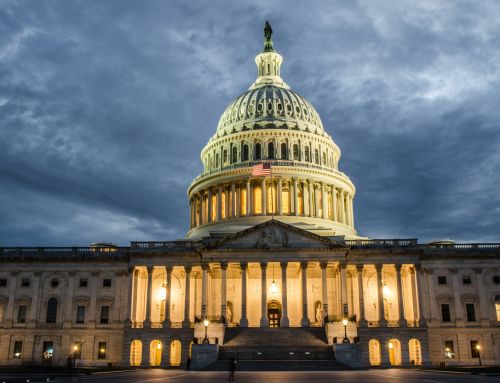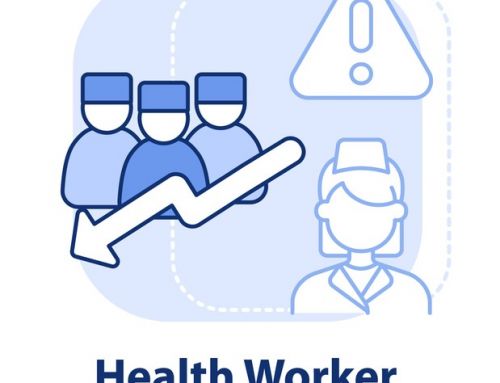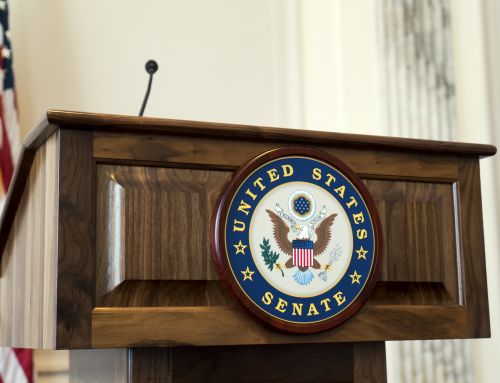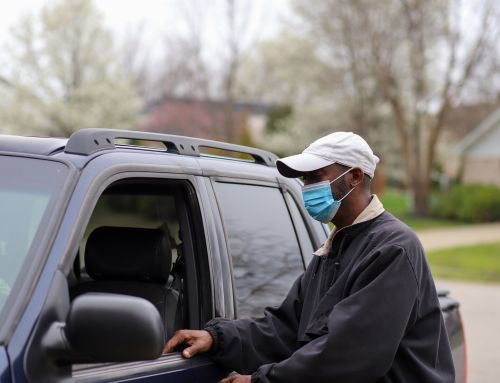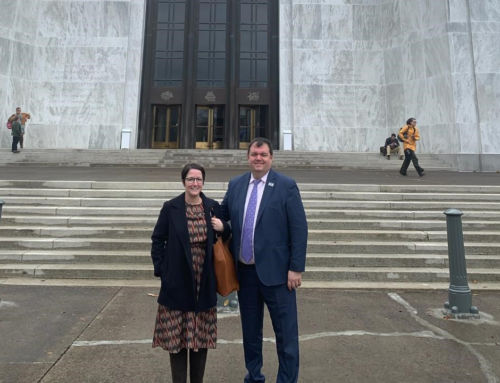Andrew Slavitt, Acting Administrator
Centers for Medicare and Medicaid Services
Department of Health and Human Services
Hubert H. Humphrey Building
200 Independence Avenue, SW
Washington, D.C. 20201
Re: CMS-6074-NC: “Request for Information: Inappropriate Steering of Individuals Eligible for or Receiving Medicare and Medicaid Benefits”
Dear Mr. Slavitt:
Dialysis Patient Citizens (DPC) responds herein to the Centers for Medicare and Medicaid Services (CMS) with comments on the above referenced Request for Information. As America’s largest patient-led organization representing dialysis patients, DPC’s membership consists of more than 28,000 dialysis and pre-dialysis patients and their families. We seek to ensure the patient point of view is considered by policy makers.
DPC’s mission is to improve the quality of life of dialysis patients by engaging policy makers, providers and the public. Through patient education, empowerment and advocacy, we work to increase awareness about kidney disease and promote favorable public policy. However, improving quality of life for patients can only go so far without improving the quality of care patients receive. DPC knows that a diagnosis of end-stage renal disease (ERSD) does not mean the end of life. Dialysis patients can lead long and productive lives because Congress and CMS remain committed to ensuring patient access to quality kidney care.
At the outset we want to express our disappointment at the thrust of the RFI—which suggests that the agency has already made up its mind—and its reliance on what it concedes are “anecdotal reports.” In policymaking, the proper role of the anecdote is to illustrate an overarching truth, not to substitute for diligent fact finding.
ESRD is a devastating condition, and is both physically and financially debilitating. Patients need health insurance coverage that addresses both their treatment and financial needs. Since enactment of the Affordable Care Act, more patients have had more insurance coverage options to choose from. Importantly, the ACA introduced insurance products with maximum out-of-pocket limitations, which offer relief from the open-ended financial liability of fee-for-service Medicare. The availability of charitable assistance puts these options within reach for patients who can no longer work full-time.
But charitable premium assistance constitutes a sort of “signature” identifying ESRD patients that some insurers have used to single them out for disenrollment. Insurers have contended that a policy of refusing third party payments, which makes no mention of enrollees’ medical condition, does not violate the Affordable Care Act’s guaranteed issue and guaranteed renewability provisions; but we believe it is a pretext, and are disappointed that the agency has not taken action against these discriminatory actions by insurers.
We appreciate CMS’s concern for the interests of dialysis patients, and we also appreciate CMS’s concern for the Exchange risk pool. However, there is a tension between preserving the ACA-conferred rights of people with pre-existing conditions and maximizing the health status of the Exchange risk pool. And under the ACA, there is no ambiguity as to which one takes priority: the ACA requires that insurers accept applicants regardless of health status, and it does not permit insurers to disenroll people with pre-existing conditions, either directly or indirectly. While it may not be CMS’s intent to do so, the RFI could be interpreted as inviting private insurers to disenroll at least one category of people with pre-existing conditions, namely ESRD patients. We urge CMS to make clear that this is not its intention in publishing the RFI.
I. Queries regarding “steering practices”
The term “steering,” ordinarily heard in the context of the Anti-Kickback Statute, means a provider referring a patient to another provider in exchange for a financial inducement. This practice harms patients because it can result in unnecessary utilization or referral to a provider based on a consideration other than quality of care or patient experience.
When the term “steering” is used in the context of purchasing insurance, it refers to a broker urging a consumer to buy a policy not based on the lowest price but upon the highest commission.
We are concerned that the RFI extends the definition of this loaded term, with a fraud-and-abuse connotation, to suggest that it could be per se improper for a dialysis clinic to counsel a patient about any insurance option that involves a higher reimbursement for the provider.
Congress has expressed its support for a diverse payer mix for dialysis clinics through its enactment of the Medicare Secondary Payer (MSP) law in 1981 and extensions of it on subsequent occasions. The current iteration of the MSP law gives dialysis patents the right to keep their commercial coverage primary for 30 months. This law ensures “all-payer” funding for America’s kidney care infrastructure, so that dialysis clinics are not funded solely by the federal government. This puts kidney care in the same posture as other treatments. For instance, while the vast majority of patients in hospice are covered by Medicare, hospices still receive reimbursement from private insurers; while a significant proportion of deliveries are paid for by Medicaid—a majority in some states—private insurers still cover pregnant women. To our knowledge, the only part of the U.S. health care infrastructure that is funded entirely by Medicare is graduate medical education—a situation deplored by many health policy experts.
Because job loss frequently accompanies kidney failure, many ESRD patients need financial assistance to keep their commercial coverage in place. This assistance is available from the American Kidney Fund (AKF), a charity that received permission from the Office of the Inspector General (OIG) of the U.S. Department of Health and Human Services in 1997 to make such payments. AKF assistance and the Medicare Secondary Provision act synergistically—in an era of high health care costs and high health insurance premiums, AKF assistance is often necessary so that the MSP rights can be exercised.
Insurers have begun a multi-pronged campaign to dismantle the all-payer system for dialysis. It is clear that they see the present time as propitious for such a campaign, given the regulatory sympathy they have engendered due to their potential withdrawals from the exchanges. They have no doubt chosen the attack on third party payments as a superior centerpiece for this campaign because of the complexity of the system, and the inability of advocates to explain it in short sound bites. But parallel to this campaign, insurers are also deploying three other tactics to remove ESRD patients from their rolls. They are promulgating plan language that purports to disenroll consumers eligible for Medicare, and plan language that pegs payment for dialysis treatment to Medicare prices. All of these tacks, on their face, violate the Medicare Secondary Payer law and its requirement of “non-differentiation” in benefits for enrollees with ESRD. Some are also slashing the number of in-network dialysis providers.
Note that the MSP law is mandatory for insurers but not for patients. Congress clearly expected that many patients would voluntarily choose private coverage over Medicare, undoubtedly because employer-sponsored insurance has had a higher actuarial value than Medicare. We disagree with the premise that chronically ill patients with high expected medical expenditures would not choose a richer health plan in the absence of undue influence.
The Agency acknowledged in its 2008 revisions of the ESRD Conditions for Coverage that “determining insurance coverage” is a customary role for social workers in dialysis clinics and did not suggest that social workers’ presentation of potential coverage sources was a matter of concern.
Thus, to address the first, third and fourth queries in the RFI: If CMS defines “steering” broadly as dialysis clinic personnel informing patients who have an option of enrolling in private coverage and expediting enrollment in such coverage by referring the patient to the American Kidney Fund, we understand that these activities take place as outlined under the guidelines set forth in the HHS Inspector General’s Advisory Opinion 97-1. That opinion ruled that provider contributions to AKF “are not made to or on behalf of beneficiaries… [and] are not likely to influence patients to order or receive services from particular providers… [T]he coverage purchased by AKF will follow a patient regardless of which provider the patient selects… In sum, the interposition of AKF, a bona fide independent charitable organization, and its administration of HIPP provides sufficient insulation so that premium payments should not be attributed to the Companies.” OIG made this ruling knowing that AKF’s review of an application for assistance would be triggered by, inter alia, “a referral letter signed by a social worker or administrator at a dialysis provider.” As described in more detail below, we believe that ESRD patients should be able to choose among all lawful coverage options available to them, and that assistance from clinic social workers in presenting insurance options will be valuable, given the general lack of “health insurance literacy” in the U.S.
If CMS defines “steering” more narrowly as influencing patients to make enrollment decisions that are not appropriate to the individual patient’s specific circumstances, and health and financial needs, or providing information in a manner that is not fair, accurate, and impartial: We convened our Board of Directors, which consists entirely of ESRD patients, to pose this question. None of the patients reported experiencing such problems personally nor hearing of them from peers. Several board members indicated that they had never been in a position to choose between private and public coverage, and that having such choices presented to them would have been welcomed.
While we do not think it is pervasive, we do think it is possible that clinic personnel could use their position to persuade patients to choose an insurance option that is in the best interests of a provider but not in the best interest of a patient. If this succeeds, it is surely attributable to the generalized confusion that consumers have about insurance, as well as the stresses of acclimating to life on dialysis, and not to the availability of third party payments. We are prepared to work with the agency and other stakeholders to promulgate best practices or other rules governing providers’ discussion of insurance options. We believe the concerns the agency has raised could be addressed through adherence to a uniform code of conduct that requires information to be provided in a fair, accurate and impartial manner.
It should be noted that just as patients receive information from clinics about private coverage, they also receive information from insurers about public coverage. Attachment 1 is an excerpt from a brochure used by Regence health plans in northwestern states. The brochure warns that Medicare Part B coverage is necessary to protect the patient from “being billed by participating Medicare providers for the difference between what Regence pays and what the provider charges.” This refers to the fact that Regence no longer contracts with dialysis clinics to be part of their networks at discounted rates, and instead has unilaterally decided to pay 125% of the Medicare allowed amount. The brochure goes on to say that Regence “case managers can help you apply” for Medicare.
Attachment 2 is the form letter that United Healthcare sends to its dialysis patients threatening to disenroll them if they do not sign an affidavit attesting to the sources of their income. The letter urges the patient to call a United nurse to discuss enrolling in Medicare, and also refers them to the state Medicaid agency.
II. Queries regarding Medicare- and Medicaid-eligible patients
The agency requests comments on the enrollment of Medicare- and Medicaid eligible patients into individual market plans. There is nothing inherently suspect about patients eligible for public programs enrolling in commercial insurance—indeed, the opposite situation, where patients eligible for both public and commercial insurance choose public coverage, is thought by some to be the greater policy problem, known as “crowd out” or “substitution.” The Medicare Secondary Payer law contemplates that ESRD patients eligible for Medicare will remain in commercial coverage for the first 30 months following kidney failure. Several state demonstrations, most notably in Arkansas, have used commercial insurance to serve the Medicaid population, and the “churn” in and out of Medicaid eligibility is so common that some of the most successful insurers on the Exchanges serve Medicaid and commercial enrollees interchangeably.
We believe that Medicare- and Medicaid eligible patients should retain their right to choose between private and public coverage. There are four categories of patients who benefit from third party payments. For each of these groups there are personal considerations that will affect a patient’s choice of coverage, as well as policy considerations that favor maintaining private coverage as an option.
A. Medicare-eligible patients
The option to maintain private health coverage is important to Medicare eligible ESRD patients for several reasons.
First, Dialysis Patient Citizens’ 2015 Annual Membership Survey, conducted by the IPSOS international research firm, found that dialysis patients prefer private coverage. We asked several questions from the Consumer Assessment of Health Plan Survey (CAHPS) to gauge relative satisfaction with their coverage. We found:
- A greater proportion of commercially insured dialysis patients rate their health insurance as the “best health insurance plan possible” than do those enrolled in Medicare.
- Medicare beneficiaries are more than twice as likely as private health plan members to report having trouble getting health care that they wanted or needed.
- Medicare beneficiaries are more likely than private health plan members to report difficulties in getting the specific medication they need, difficulty getting someone on the phone to answer questions, and delays in receiving care or treatment.
Patients may also prefer private coverage because it gives them access to items not available through Medicare:
- A Texas patient reports that after comparing items covered by Medicare to items covered by ACA plans, he discovered that the ACA plan paid for diabetic supplies not covered by Medicare.
- An Illinois patient reported that his private coverage paid for nutritional supplements prescribed by his nephrologist, but after his 30 months expired and he went on Medicare, he had to pay for the supplements out-of-pocket.
- An Idaho patient reported that keeping her private coverage allowed her to be treated for depression by a psychologist who does not participate in Medicare.
Second, there is a significant financial advantage for dialysis patients to keep their private coverage. According the Bureau of Labor Statistics, the average private health insurance plan has an actuarial value of 88.9 percent, significantly higher than Medicare’s 80 percent. Health maintenance organizations—which are not available to ESRD patients through Medicare—have an average actuarial value of 91.8 percent. Importantly, under the ACA, private health insurance plans have out-of-pocket maximums; fee-for-service Medicare does not. Most ESRD patients will, in a given year, have Medicare coinsurance responsibilities in excess of the ACA out-of-pocket maximum of $6,850 per year. Retaining equal access to private health insurance is especially crucial for dialysis patients’ financial well-being in the half of U.S. states that do not guarantee them access to Medigap supplemental coverage.
The RFI suggests that Medicare-eligible patients are risking a late enrollment penalty by choosing exchange plans. In late 2013 and early 2014, applicability of the Medicare late enrollment penalty was the subject of much discussion among kidney patient advocates and also among insurance regulators and consumer representatives at NAIC. The consensus has been that, although the statutory language refers to employer-sponsored insurance and therefore is ambiguous, given the expectation at that time that exchange plans could supplant employer coverage for some consumers, and the clear intention of the statute to penalize 65 year-olds who delay enrolling in Medicare until they are sick, the penalty would not apply to dialysis patients who maintain their insurance coverage. We further note that since state benchmark plans are typically employee group health plans, we interpret the Medicare Secondary Payer law to apply to exchange plans and give exchange plan enrollees the right to maintain private coverage for 30 months.
B. Medicaid-eligible patients
Because Medicaid typically has nominal cost-sharing, questions have been raised as to why it would ever be in a patient’s best interest to choose commercial coverage. There are several reasons an ESRD patient could prefer a commercial plan to Medicaid and be willing to trade off the responsibility for cost sharing:
- To obtain dialysis while traveling out of state. Many people relocate to states other than their native state as they take jobs or marry. Patients who find themselves on dialysis in states to which they have relocated may wish to return to their hometowns periodically to visit relatives. These patients may find commercial coverage expedites their ability to obtain dialysis in their hometown.
- Similarly, patients may see commercial coverage as easing their ability to obtain a transplant at an out-of-state transplant center. The problems Medicaid patients have in obtaining out-of-state treatment are well-documented.
- Patients may also see commercial coverage as improving access to specialist physicians who don’t accept Medicaid patients. Again, the problem of referring Medicaid recipients to specialist physicians is well-documented. Of particular importance to ESRD patients is their ability to see a vascular surgeon to prepare a fistula, which aligns an artery and vein in the arm to manage the increased blood flow necessary for dialysis. This is a timesensitive matter as each month that passes while a dialysis patient uses a catheter for access exposes the patient to possible infections. Hospitalizations for infections are expensive to the Medicare and Medicaid programs and for this reason Medicare penalizes dialysis facilities where a significant number of patients use catheters.
- A number of states have placed caps on the number of prescription drugs Medicaid patients can get. If the patient needs more drugs than are covered in the state plan, his or her cost sharing could equal or exceed the cost sharing in an exchange plan.
Ms. B is a dialysis patient in Nevada who switched her coverage from Medicaid to commercial insurance to facilitate interstate travel. For Ms. B, the ability to travel was important because she had not been able to visit her adult daughter and new grandchild. Upon reuniting with her daughter, she was especially glad she had made the trip because the daughter appeared to be experiencing post-partum depression. Ms. B also reports she now has access to more doctors who can examine some symptoms of illness that other doctors had not been able to diagnose.
In Nevada, as in 16 other states, Medicaid does not cover non-emergency dental services for adults, so Ms. B did not trade off such coverage to travel. We do not know if her story is typical, but Ms. B feels “it was a blessing” to obtain this coverage. As long as such choices are knowingly made, and not prodded by a waiver of cost sharing or other inducements, we think this option should remain available to appropriate patients.
C. Medicare-enrolled patients
The great majority of patients receiving American Kidney Fund assistance are Medicare beneficiaries. AKF assistance pays their premiums for Medicare supplement (Medigap) policies.
We cannot overemphasize the importance of Medigap to ESRD patients. Patients consistently report that transplant centers will not list them for transplants if they do not have Medigap coverage. While one would hope in this day and age that money would be no object to one’s ability to obtain a kidney transplant, such is not the case. Transplant centers demand not only that patients guarantee the payment of their Medicare coinsurance obligations but also have sufficient financial security to pay for aftercare, including immunosuppressive drugs. AKF assistance addresses both of these requirements by easing the illness-related financial pressure on the patient.
Any restrictions on charitable assistance for Medigap premiums will aggravate the problem of unequal access to transplants based upon a patient’s financial situation. Any actions that CMS takes must preserve the ability of the American Kidney Fund to offer this assistance to Medicare beneficiaries. This is a situation where the interests of dialysis clinics and dialysis patients are almost always aligned, and there is little need for regulatory oversight.
D. Privately insured CKD patients/future ESRD patients
Today, millions of Americans have chronic kidney disease (CKD), relatively few of whom know it. Each year, about 117,000 of them will experience kidney failure. Most of these patients have spent their lives paying into the health insurance system through their employers, but many of them are currently among the 10 million enrolled in ACA plans. For these current CKD/future ESRD patients, it is critical that public policies incentivize their health plans to identify CKD, treat it appropriately, and, when ESRD becomes inevitable, properly manage the transition from CKD to ESRD.
If a patient can lose coverage when his or her chronic kidney disease progresses to end-stage renal disease, an insurer has a perverse financial incentive not to take all possible measures to preserve the patient’s kidney functions. This is because CKD typically accompanies other comorbidities, often making CKD patients more expensive than other enrollees. An insurer could off-load those expenses onto the Medicare program if the patient’s kidneys fail sooner rather than later. Further, an insurer with no financial stake in a patient’s well-being after onset of ESRD has no incentive to smoothly manage the transition from CKD to ESRD by obtaining a preemptive transplant if possible, creating a fistula for safe dialysis access, and educating the patient about kidney failure in advance so he doesn’t “crash” into dialysis, resulting in infections and hospitalizations.
These perverse incentives are not present when plans must pay for renal dialysis for at least 30 months before Medicare becomes the primary insurer. This is the primary policy rationale for the Medicare Secondary Payer law. With the 30-month requirement in place, CKD patients need not fear denials of pre-authorization for fistula surgery, or for referral for transplant evaluation, or other penny-wise stinting that is practical when costs can be shifted, but pound-foolish for the Medicare program. Privately insured patients we have met were encouraged to have surgery preparing an access site for peritoneal dialysis (PD), a home-based modality that is considered to be under-used in the fee-for-service Medicare population and which generates fewer complications and lower overall health care expenditures for ESRD patients. PD is a win-win for patients and payers, but in FFS Medicare there is no party accountable for downstream costs and therefore no party with an incentive to inform patients about this option.
Dialysis treatment is an “essential health benefit” (EHB) through the interaction of state and federal law. The MSP law provides that ESRD patients are entitled to keep their group health insurance for at least 30 months. As such, when a group health plan is selected as the benchmark for a state’s EHB, that designation extends this 30-month coverage mandate to the individual market.
Consumers enrolled in exchange plans must be permitted to keep those plans for 30 months after kidney failure. While dialysis clinics benefit from the 30-month period, it is important to note that they are not the intended beneficiary of this policy—the primary purpose of this policy is to protect consumers who are at risk for kidney failure in the future.
III. Conclusion
Maintaining all-payer responsibility for renal care is also important to patients, and society, collectively.
Private insurers have been an important source of innovations and improvements in ESRD care. Only commercial insurers have both the incentive and the capability to properly prepare a CKD patient for ESRD and to develop improved care techniques to avoid costly complications. The “Optimal ESRD Start” program pioneered by Southern California Kaiser Permanente represents the most sophisticated effort to manage the CKD-ESRD transition. United Healthcare recently announced it would pay the expenses of living kidney donors to help expedite transplants— exercising private-sector flexibility that the Medicare program does not share.
While one would like to believe that insurers would implement such programs in the absence of a requirement to continue coverage after kidney failure, in fact, insurers would have no financial incentive to make these investments. Medicare’s ESRD Disease Management Demonstration, a partnership between health plans and providers in which entities were paid a capitated fee, spurred the first integrated care management systems for dialysis patients. The techniques developed at these demonstration projects are currently being deployed in Medicare Advantage Special Needs Plans (SNPs) such as Village Health and CareMore, and through partnerships between large dialysis organizations with Aetna and Highmark to manage those insurers’ ESRD patients. It is important to note that these services, which have proven successful in reducing complications and hospitalizations, are only available to FFS Medicare patients in a handful of ESRD-specific Accountable Care Organizations.
The grim reality is that the right to maintain private coverage for 30 months beyond kidney failure would be illusory for many patients if not for the assistance in paying premiums offered by the American Kidney Fund. Kidney patients who’ve paid into the health insurance pool for decades as relatively healthy enrollees will too often, upon reaching ESRD, be unable to continue working and pay for insurance when they are most desperate to draw upon its benefits. AKF assistance performs a dual role of helping needy individuals and incentivizing commercial insurers to provide quality kidney care.
CMS appears to take the position that ESRD patients should be in the Medicare or Medicaid program rather than in private insurance. That is not what the law requires, however: in many cases, ESRD patients are eligible for both Medicare and/or Medicaid and private coverage, and what is best for the patient will vary according to the patient’s circumstances and the benefits private coverage provides. Unless and until Congress changes the law to prohibit ESRD patients from electing private coverage, patients who are eligible for both a government program and private coverage cannot be prohibited from electing private coverage.
Finally, CMS should also make clear that it is not pre-empting the authority of State Insurance Departments to determine whether insurers in their state must accept payment from third-parties other than those set forth in the Rule. As CMS has consistently emphasized, the states have traditionally regulated the insurance industry; a state’s Insurance Commissioner is much closer to and more familiar with the insurance market in that state than are federal officials; and each state’s insurance market is different.
Accordingly, some state regulators, including commissioners in North Carolina and Oregon, have required issuers to accept third-party payment. A Louisiana statute specifically requires insurers to accept AKF payments. Other states have reached the opposite conclusion but in so doing have realized the complexity of the issue. For instance, a draft bulletin released by the Idaho commissioner originally would have banned all third party payments, but after receiving comments from stakeholders, the bulletin was amended to permit payment of Medigap premiums and prohibit insurers from inquiring into the source of money used by enrollees to pay their premiums themselves, as United Healthcare did as shown in Appendix 2. Several other states are currently deliberating this after having heard arguments from both sides.
Whether it makes sense for a particular state to require carriers to accept third party payment can depend on such factors as the number and financial condition of the carriers in the market; the conduct of the carriers; the number of people benefitting, or who could benefit, from third-party payment; the options available for beneficiaries of third-party payment if carriers are not permitted to refuse such payment; and whether the state’s unfair insurance practices act, or its general consumer protection act, prevents insurers from refusing third-party payment.
Rather than establishing a uniform standard, CMS has deferred to the states on issue after issue in implementing the ACA. In implementing the Minimum Medical Loss Ratio (MLR) rule, for example, CMS authorized states who could demonstrate that the statutory 80% standard would be difficult to comply with to establish a lower MLR requirement for three years. In implementing the rate review rule, CMS authorized all but five states–those that had essentially no rate regulation–to review rates in accordance with their own statute, which varied substantially among states. In implementing the Exchanges, CMS allowed each state to decide whether to have an active Exchange–one that negotiated with carriers and/or established standardized benefit packages–or a passive Exchange, which did neither. CMS also allowed states to make their own decisions as to whether people in non-ACA-compliant plans could keep those plans. It would be a stark departure from those precedents for CMS to pre-empt state determinations regarding insurers’ conduct with respect to third-party payment.
Thank you for your consideration of our comments and concerns. If you have any questions or would like additional information, please do not hesitate to contact me or our Government Affairs Director Jackson Williams.
Sincerely,
Hrant Jamgochian, J.D., LL.M.
Chief Executive Officer






